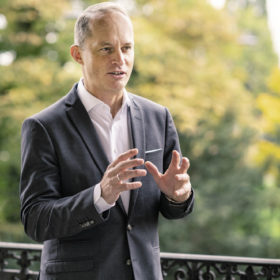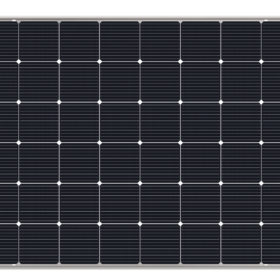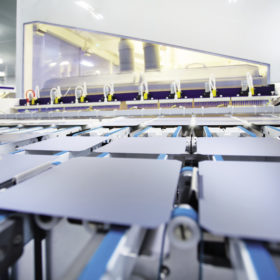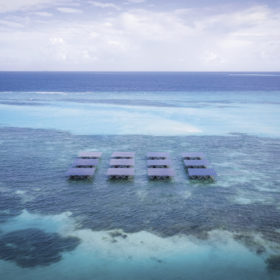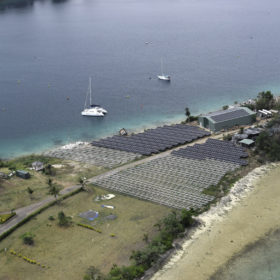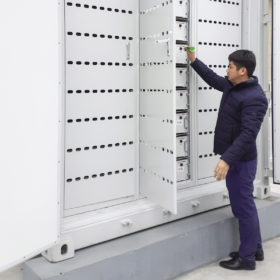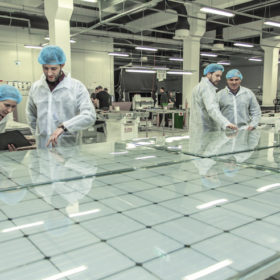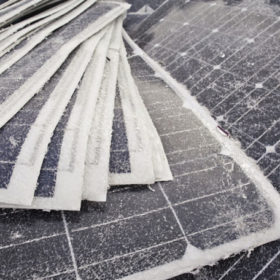PERC potential
Though equipment suppliers in China have upped their game recently in terms of capabilities and cost structure, significant orders are still flowing through to European and U.S.-based suppliers in certain areas of manufacturing. Among these companies is RENA Technologies GmbH, which recently booked orders for 10 GW of wet chemical processing tools for PERC from three manufacturers in China. On the back of this deal, pv magazine spoke with RENA CEO Peter Schneidewind about the landscape for equipment suppliers and the future direction of technology.
The way to the TOPCon
TOPCon cell technology has become one of the two leading next-generation options after mono PERC. But for the n-type architecture to truly become a rival to PERC, high-quality and cost-effective production technologies must become settled.
Coronavirus disrupts
A viral outbreak in the city of Wuhan, in China’s Hubei province, has become a nationwide health crisis with global implications. And with PV manufacturing concentrated in China, there are serious implications for all corners of the solar world, reports Vincent Shaw in Shanghai.
Criteria and implications for gallium-doping
As a remedy for light-induced degradation (LID) in crystalline silicon cells, gallium-doped wafers are showing considerable promise. With reports that ingot growth productivity can rival that of boron doping, it seems that gallium doping may now be able to meet the cost, integration and performance criteria that have informed solar manufacturing technology adoption, writes Alex Barrows, senior research analyst at U.K.-based consultancy Exawatt.
Sink or swim
The impressive progress made by offshore wind arrays may be attracting a new group of PV developers looking to leave the constraints of the roof and free field behind. And while saltwater, wind and waves are no friend of PV, progress is being made in proving the potential applications.
Pacific Islands embrace solar power to change lives
A profound shift is taking place in the Pacific Islands as countries move away from imported fossil fuels to explore their abundant solar potential and alleviate energy poverty. Over the last decade, the region’s energy transition has swung into full gear, driving the development of a whole new industry. Bruce Clay, general manager of Fiji-based EPC Clay Energy and president of the Sustainable Energy Industry Association of the Pacific Islands (SEIPA), talks about the market dynamics and region-specific challenges of unlocking solar power, on and off the grid.
Independently evaluating battery quality
Companies investing in battery energy storage have historically relied on trust in the major brands supplying the batteries and complete systems. However, with the absence of international manufacturing quality standards, increasing price pressure on major brands, and the proliferation of low-cost manufacturers, buyers and investors are being forced to address quality risks with batteries. Ian Gregory and Benjamin Sternkopf of PI Berlin discuss the need for independent quality assessment in energy storage.
Materials in the circular economy
A number of companies are now racing to find new materials to replace toxic or otherwise unsafe elements in PV modules, in pursuit of circular economic ideals. In a similar vein, many researchers are also looking for ways to recycle and reuse some of these materials at the end of solar panel lifetimes. In line with these efforts, artificial intelligence and machine learning now play a critical role in identifying new chemical footprints for PV modules and cells.
Bulking up for bigger tracking challenges
Bigger modules and more challenging conditions are leading tracker designers to strengthen their offerings to deliver the stability required for long-term operation. Eduardo de San Nicolás, Soltec’s chief strategy officer, says that the Spanish company’s efforts have resulted in a new generation of trackers fit for almost any wind conditions – along with a host of other benefits including advanced communications and optimized bifacial yield.
The afterlife of solar panels
Use of the term “circular economy” is growing in virtually every industry worldwide – solar included. As noted throughout Q3, in the UP initiative’s focus on circular manufacturing, work is already underway to integrate circular principles into all areas of business, from internal operations and supply chain management to manufacturing and installations. In a recent analysis of PV recycling, BloombergNEF detailed six conclusions for the solar industry and those who are trying to make it more circular. Cecilia L’Ecluse, solar associate, and Julia Attwood, head of advanced materials at BloombergNEF share these conclusions as part of our quarterly theme on PV module recycling.
